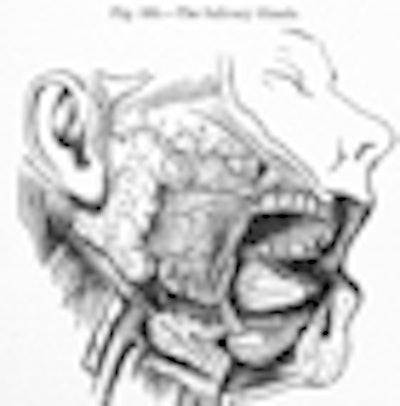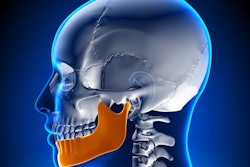
Temporomandibular joint disorder (TMJD) patients are more sensitive to pain compared to healthy people, according to preliminary results from a seven-year study presented at the American Pain Society (APS) annual meeting held May 6-8.
The $19 million study, involving 3,400 people, aims to identify and define the causes and effects of TMJD, ultimately leading to new treatments and cures.
The Orofacial Pain: Prospective Evaluation and Risk Assessment study is funded by the National Institute of Dental and Craniofacial Research, part of the National Institutes of Health. It is being conducted by the dental schools of University of Maryland, University of North Carolina at Chapel Hill, University of Florida, and the University of Buffalo.
The researchers initially brought in more than 3,000 healthy people and have been tracking them for five years to identify those who develop symptoms of TMJD. During the initial visit, the researchers evaluated various physiological and psychological factors to record the subjects' condition before they developed TMJD. Measures included sensitivity to pain, psychological elements, and aspects of lifestyle. Equipped with this information, the researchers called back patients who developed TMJD to study what may have triggered the condition.
“People with TMJD have a greater likelihood of suffering from other chronic pain conditions.”
— Joel Greenspan, Ph.D., University of
Maryland
At the APS meeting, team leaders discussed features that characterize TMJD patients, which they believe will ultimately lead to identifying the predictive biomarkers of TMJD.
"We have discovered so far that TMJD patients are more sensitive to pain in general, or pain in other parts of the body, compared to healthy people," Joel Greenspan, Ph.D., professor and chair of the neural and pain sciences department at the University of Maryland Dental School, told DrBicuspid.com. "This leads us to believe that some change takes place in the way the central nervous system processes pain within TMJD patients so that pain is exaggerated."
They also found correlation on a variety of other measures, such as heat and mechanical pain sensitivity, he added. "It is very clear that people with TMJD have a greater likelihood of suffering from other chronic pain conditions than people without TMJD."
Psychological factors
Some evidence has surfaced that psychosocial factors contribute to persistence of TMJD, said Roger Fillingim, Ph.D., a professor of community dentistry and behavioral science at the University of Florida College of Dentistry.
The team evaluated a large number of healthy volunteers to determine features of their sensitivity to pain and psychological factors related to TMJD, such as depression and anxiety. By identifying those who develop the condition, the researchers can determine whether the patients had these features of TMJD before the manifestation of the condition or experienced a physiological change after developing TMJD.
"If the initially healthy participants did have these characteristics of TMJD [greater pain sensitivity, greater psychological stress] before, then it is possible that these could be predictive factors," Greenspan said. "However, we are a year or two away from identifying any definitive factors."
Genetics could potentially play a role in the development of TMJD as well, the researchers noted.
"There are two or three genetic variations that are more prevalent in cases than controls. But these findings are preliminary because we are only looking at a fraction of our sample so far," Greenspan said.
Data sample size
Although this study confirms a lot of existing data about TMJD, it's unique in terms of its sample size. With more than 3,000 participants, it is the largest study of its kind ever conducted.
"The fact that we are getting so much information on the patients' demographics, behavior habits, physiology, psychological measures, and genetic variation gives us the opportunity to look at how all these factors relate to the condition of TMJD," said Dr. Greenspan.
The team is collecting data on all possible causes, such as grinding teeth, stress, trauma, and psychological factors. They are then ranking the factors and analyzing multiple combinations of those factors.
"Although there have been many smaller studies of individual or a few factors, this is unique because we are looking at all of these variables," said Greenspan. "The volume of data we have is almost mind-boggling."
They are also looking at subtypes among the patients, he added. "There are variations among the TMJ patient population depending on longevity and severity of their symptoms. There has been no study where the sample size was big enough to look at these subtypes at the same level of analysis that we will be able to."
The researchers are currently working on papers that will be written and submitted before the end of the year. They anticipate that in two years they will be able to report on predictive factors.
Copyright © 2010 DrBicuspid.com



















